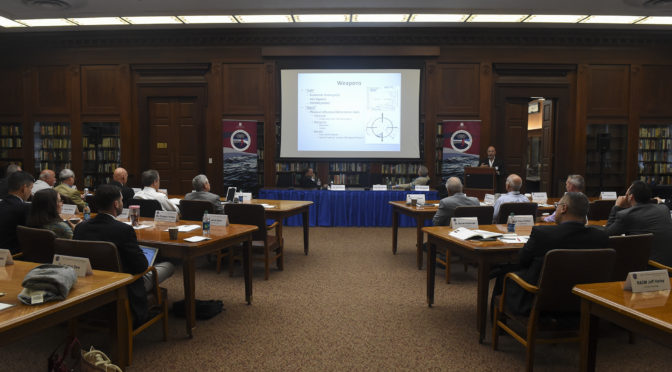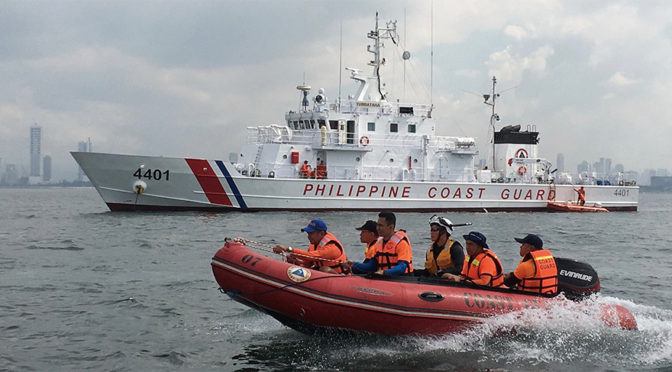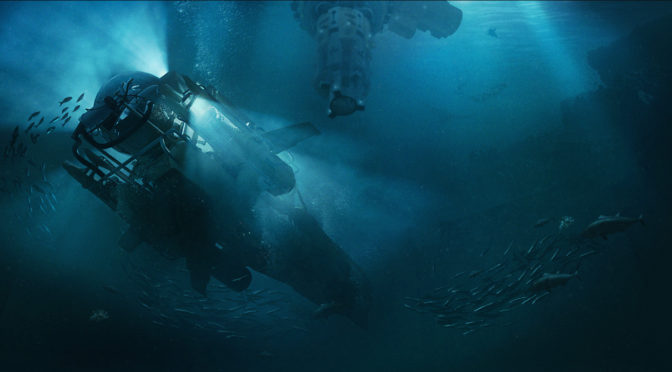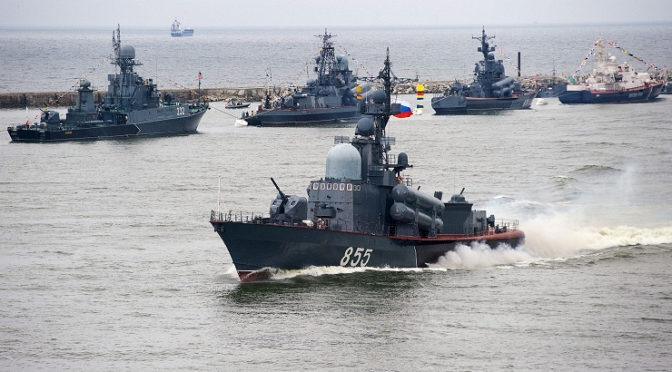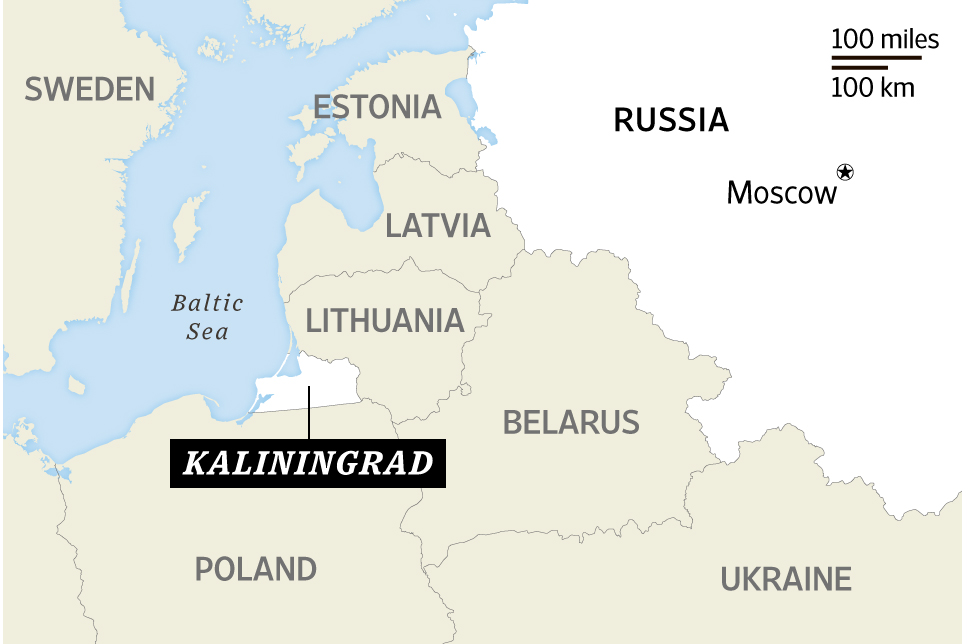By Heather Venable
Daydreaming, meditation, and long walks in the forest do not spring to mind as ways to achieve maritime superiority, much less to win the next peer conflict. But these simple approaches to thinking reward institutions with unparalleled dividends. The deepest discernment, as Isaac Asimov explains, occurs when the mind can “take new pathways and make erratic associations you would not think of consciously. The solution will then come while you think you are not thinking.”1
This approach is imperative because—amidst the proliferation of many weapons technologies—the Navy faces a challenge to its current force structure potentially more disruptive than the shift from battleships to carriers or even from sail to steam.2 Yet it sometimes takes institutions too long to accept ideas internally even as it becomes clear to external observers how desperately updating is required.3 Simultaneously, the Navy must open up spaces for creative thinking in order to regain its lost strategic acumen.4 Fortunately, solutions are not costly, but they do require a cultural shift that recognizes the importance of creativity in crafting strategy.5
Historical precedent reveals insights into how and why creativity fosters the best strategy. In the 1950s, a handful of naval officers began working to revitalize naval education by thinking carefully about how they studied history to make strategy. This group included J.C. Wylie, who actively pursued creative thinking throughout his career by challenging accepted ways of doing things, as will be seen.
Wylie also benefited from attending the regular and the advanced courses at the Naval War College on two separate assignments.6 This education provided him with the requisite depth to imbibe basic patterns of strategic thought. As Wylie explained, getting to the “heart of the problem” required diving into the “strategic patterns of thought from which grow the actions of war itself.”7
Creativity cannot occur until one has “mastered the old ways of doing or thinking.”8 As Mihaly Csikszentmihalyi explains, “One cannot be creative without learning what others know, but then one cannot be creative without becoming dissatisfied with that knowledge and rejecting it (or some of it) for a better way.”9 As such, much of the seminar format of professional military education (PME) focusing on history and international relations is sound. One cannot help one’s service push forward to viable solutions until one understands the foundational knowledge upon which past decisions have been made.
But that is not enough. Depth must be married to breadth in a way that spurs creative thought. But naval officers have not internalized these rules deeply enough because they lack a strong educational foundation. Fortunately, recent steps improve requirements for future flag officers, to include requiring all “future unrestricted line Flag and General Officers” to graduate from in-residence programs by the end of 2021.10 Key documents like the National Defense Strategy (2018) and A Design for Maintaining Maritime Superiority, Version 2.0 (2018) recognize creativity’s importance.11 Still, creativity receives only a brief head nod, providing no vision to pursue.
The tendency to recognize creativity’s importance before quickly dismissing it runs throughout the defense community. One commentator recently called for the military to develop “creative solutions” to acquire new technology, citing the example of a “commercial cloud.” But this idea is not new at all.12 This exemplifies how a technical rationalist mindset pervades much of the Department of Defense (DOD), with cursory mentions of creativity predominantly linked to inventing new products. Creativity, in other words, is assumed to contribute the most to the development of new things, rather than new thoughts.
Innovation continually underperforms because it must occur after ideas. Previous eras of transformational change required societies to tackle “primarily intellectual, not technical” challenges.13 Placing too much emphasis on the tools with which to fight results in a lack of knowledge of how to fight or to what end.
Even the 2018 Education for Seapower study undervalues creativity. After mentioning creativity twice and characterizing it, along with talent, as the Navy’s “most critical resource,” the 468-page study fails to address creativity until an appendix, which ironically details the British appreciation for this trait in its PME.14 By contrast, the report repeatedly highlights the twin concepts of strategic and critical thinking, even defining “critical thinking” in the glossary but not creativity.15
Yet creativity provides the missing link to complete a triangle consisting also of strategy and critical thinking, without which the Navy just has a wobbly “stool.”16 Creativity’s ultimate value centers on its ability to trigger new ways of thinking, which requires individuals to make mental connections in unexpected ways.17
Those responsible for crafting U.S. naval strategy must foster new ways of thinking to challenge the nation’s current strategic paradigm.18 Although the U.S. military acknowledges this need—recognizing that peer adversaries have been studying U.S. successes since Operation Desert Storm—it has not figured out how to change the rules of the game because of “functional fixedness,” or the process whereby cognitive bias “limits the way we use an object to what it was originally intended for and keeps us from seeking new usages.”19 Take multi-domain operations as an example. The Army and Air Force’s newest solution to future war has striking overlaps with its predecessor AirLand battle.20 It seeks to improve upon jointness, even as it exacerbates the communication requirements that constitute the nation’s warfighting Achilles heel. It provides evolutionary improvements but no shift in strategy because the military feels more comfortable focusing on operational solutions.21 Thus the Navy is not alone in its strategic crisis.
Likewise, the Navy struggled to adjust to the new realities of the nuclear age after World War II, a point at which Wylie and others turned to strategy to articulate the Navy’s purpose.22 Surveying the key theorists from each domain, Wylie expressed dissatisfaction with the lack of a general theory. Of the various theories, however, he found himself most drawn to Mao’s thinking on wars of national liberation as most “sophisticated.”23 He appreciated Mao’s thinking because it did not limit itself to the “bounds of military action.”24
By contrast, Wylie identified the dangerous direction that the U.S. military had taken. In effect, he argued that the DOD had embraced the ultimate measure of the airpower domain: destruction. While Wylie found destruction to be the air domain’s most logical goal, he did not necessarily see it as the key outcome for the Army or the Navy.25 But the DOD could not resist the air domain’s dangerously seductive quantitative form of measurement.
This approach continues to characterize the U.S. military’s underlying philosophy in what has been characterized as a “continuous movement away from the political objectives of war toward a focus on killing and destroying things.”26 This tendency can be seen in the Design for Maintaining Maritime Superiority 2.0’s mission statement (emphasis added):
“The United States Navy will be ready to conduct prompt and sustained combat incident to operations at sea. Our Navy will protect America from attack, promote American prosperity, and preserve America’s strategic influence. U.S. naval operations – from the seafloor to space, from blue water to the littorals, and in the information domain – will deter aggression and enable resolution of crises on terms acceptable to the United States and our allies and partners. If deterrence fails, the Navy will conduct decisive combat operations to defeat any enemy.27
Currently, the mission statement sandwiches hints of a holistic naval strategy between “prompt and sustained combat” and “decisive combat operations.” Those operational and tactical tasks go last, not first and last.
Wylie posited shifting away from pure destruction toward asserting control. By control, Wylie did not refer to control of the sea—a concept so natural to naval thinkers—but something much broader. He defined control as how a “social entity” exerted control over individuals through the power of ideas. he sought to prod the U.S. to “articulat[e] . . . a philosophy to be ‘for.’”28 Promoting aspects of an ideological enemy’s vision during the Cold War required moral courage and intellectual openness.
For the Navy to regain its strategic acumen similarly requires traditional ways of thinking to be “disrupt[ed]” so that one achieves a perspective typical of an outsider rather than an insider.29 As Geoff Colvin asks, “Why didn’t IBM invent the personal computer? Over and over, the organizations that knew all there was to know about a technology or an industry failed to make the creative breakthrough that would transform the business.”30
One of the easiest ways to facilitate this process is to locate strategists on cultural fault lines because they trigger new ways of seeing and understanding, which helps them envision how to change the rules of the game rather than reacting to what others do. As Everett Dolman explains:
“When confronted with an unbreakable logic, such as the paper-scissors-rock dilemma of the of the Swiss pike, which is superior to the French cavalry, which is superior to the Spanish tercio, which is superior to the Swiss pike, ad infinitum, the only way out is to move beyond the conundrum and change the rules of the game.”31
This problem is made more challenging by differences in perspective between tactical thinkers and strategic ones.32 A tactical thinker concentrates on the short-term prospect of winning a clear-cut victory. A strategic thinker, by contrast, plays the long game, continually asking, “then what?” These two perspectives often exist in tension. In the case of a father who wants to teach his daughter how to play chess, the tactical mindset of seeking to “win” a game sits at odds with the more strategic perspective of ensuring that the father does not extinguish the daughter’s motivation to learn when she keeps losing.33
Recently, then-Chief of Naval Operations, Adm. John Richardson, explained that the Navy had a new strategy of “making the first moves ‘so that we can force our competitors to respond.’”34 A “first move,” however, epitomizes this short-term tactical approach. A more holistic method begins with the consideration of desired ends. Richardson made his comments in the wake of another freedom of navigation operation, also making the strategy’s novelty unclear. Richardson’s rectitude can be understood in light of the nation’s return to great power conflict; still, the deepest creative thinking cannot occur if the Navy shuts itself off from outside connections that stimulate originality. Indeed, the U.S.’s greatest strategic advantage may be how it fosters the sharing of information; China’s tight control of information, by contrast, could result in a creative drought in some areas, although it might be able to overcome these limitations in other ways that it facilitates creativity.35
Because of the range of political, economic, diplomatic, and military responsibilities inherent to the maritime domain, it is arguable that the Navy should be the most comfortable with thinking strategically, as some have argued.36 Other advantages result from the Navy’s greater experience with cumulative as opposed to sequential strategies. The Army, for example, struggled to adjust to a non-linear battlefield during the Global War on Terror. By contrast, the Navy may possess a seamless ability to perceive and understand a kind of “spatial non-linearity” because its officers are comfortable with the ocean, which lacks an “obvious threat direction.”37 The Navy also has helped to contest “excessive maritime claims and practices,” a perspective useful for rising above military solutions. These experiences should position the Navy to think creatively about future warfare.
Yet this optimistic assessment of naval talent should be considered in light of the reality that naval officers “underperform” in graduate programs, although the Secretary of the Navy’s response to Education for Seapower indicates that important changes are underway.38 The study, however, stops short of identifying a holistic solution to the Navy’s strategic shortfalls.39
By contrast, Wylie’s career honed his ability to step outside of expected patterns of thought. In particular, his time serving on the USS Augusta in the Asiatic Fleet gave him an “appreciation of cultural differences” and useful experiences with diplomacy even if he could not participate in fleet exercises in home waters.40 In short, it broadened his vision. Assigned in World War II to instruct at a school for destroyers arriving in the Pacific theater, Wylie confronted “ingrained patterns of thought” in those crewmembers he had the responsibility for training.41
Wylie’s ability to command and control depended on creative communications solutions that he devised in opposition to the doctrine du jour while challenging accepted norms of naval warfighting culture.42 Rather than fight at the conventional steering position, he positioned himself at the radar scope so that he could better visualize the unfolding battle.43 His accomplishments—some of them working in tandem with his ship captain Commander William Cole—epitomize the challenges of integrating new technology seamlessly into an institution against ingrained ways of thinking.44 As has been recognized, technology is easy. People are hard.
Wylie acted similarly at the Naval War College by fostering new ways of doing things. As described by long-time instructor and supporter of the institution Rear Admiral Henry Eccles, Wylie “demonstrated his imagination and his independence of mind in a continuing challenge of conventional assumptions and routine formulations.”45 Much of his effort centered on encouraging a broader and more active study of naval history. Wylie believed that the U.S. should adopt the British model of producing strategists by widening their horizons, to include exploring connections with politics, the economy, and culture.46
The resulting program required participants to develop their thoughts on a weekly basis, writing a paper each week and then “defending” it in a seminar attended by various experts.47 This kind of habitual writing offered deep learning, providing the key foundational knowledge to engage in significant strategic thought. Indeed, it walked Wylie through a series of baby steps. Shorter articles eventually led to his work on naval strategy being published in 1967.
And, before the joint mandates of the Goldwater-Nichols Act, Wylie sought to understand other services’ perspectives, even beginning his work with such a discussion.48 Likewise, Wylie’s strategic vision anticipated the perspective needed to undergird multi-domain operations (although the Navy has not yet bought in fully).49
Multi-domain operations require naval strategists to balance an understanding of their own service’s capabilities and limitations with a holistic comprehension of other services, enlarging their own perspective outside of their own domain. Or, as one author describes it, “Multi-domain operations start with the recognition that maneuver in one’s domain is dependent upon actions, both friendly and adversarial, that occur within other domains.”50 Yet some naval officers already struggle to look beyond their own tribe within the Navy, much less beyond their own expertise in and familiarity with their own domain.51
Having taken important steps to improve its foundation of learning, the Navy need not create more administration or sponsor expensive studies to begin fostering creativity. It might sound trite, but more creativity occurs in the shower than at work.52 The simple act of walking, for example, physiologically improves creativity.53
Specific recommendations designed to target multiple aspects of naval culture and the DOD include:
- Begin all Navy education courses with a discussion of creativity and how to channel it daily. Creativity is a way of thinking that more sailors must understand how to harness. Resident PME provides an ideal space for teaching creative approaches until they become habitual. Likewise, the Navy also must recognize those who genuinely crave intellectual engagement and have a “drive for exploration”—the best predictor of creativity—and place them in positions where they can create.54
- Crowdsource ideas for naval strategy in conjunction with naval strategists screened for their creative potential who possess both depth and breadth.55 While this suggestion appears the most outlandish, it best reflects how creativity functions in the 21st century.56 Add to the mix a handful of graduate school interns to craft a holistic strategy for the Navy. Provide them the opportunity to engage with others on cultural fault lines like San Francisco or Calcutta.
- The CNO must do something novel and attention-getting to demonstrate how the Navy truly cares about PME.57 The CNO should convey his message in a personal manner across the ranks of the Navy, including what has been called the Navy’s “frozen middle.”58 The Navy may not control budget battles, but it must control its own culture. The CNO should also provide an equivalent of the Rapid Innovation Cell for ideas to transform the Navy’s strategic thinking, which previously fell under his office and allowed for junior officers to bring diverse perspectives and opinions to his attention.59 Again, this is something being done with innovation more so than with ideas.60
- In negotiating with the Army and the Air Force over the future of multi-domain operations, it is imperative that the Navy not buy in until it can get the other services to agree to a holistic strategy befitting the broadest tradition of naval thinking. As Wylie noted, for too long the U.S. has been dominated by the “comfortable and placid acceptance of a single idea, a single and exclusively dominant military pattern of thought” that could be characterized today as an emphasis on destruction.61
These steps can begin changing institutionalized culture while paying strategic dividends at bargain-basement prices.
The Navy’s need to craft a creative and holistic strategy has not been so urgent in decades. Wylie’s vision of how one loses maritime superiority resonates powerfully in light of recent events in the South China Sea. He explains how:
“the exploitation of sea power is usually a combination of general slow stiflings with a few critical thrusts. These latter are frequently spectacular and draw our attention to the exclusion of the former, while in point of fact the critical thrusts would not be critical were it not for the tedious and constant tightening of the screws that make them possible.”62
Only a strategic vision cognizant of how the military is “inextricably woven into the whole social power fabric” can provide the necessary answers to help the Navy and the military as a whole be the global force for good it can be when focused on ends.63
Heather Venable is an associate professor of military and security studies at the U.S. Air Command and Staff College and teaches in the Department of Airpower. She is the author of How the Few Became the Proud: Crafting the Marine Corps Mystique, 1874-1918. The views expressed are the author’s alone and do not represent the official position of the U.S. Air Force, the Department of Defense, or the U.S. Government.
References
1. See, for example, Isaac Asimov, “The Eureka Phenomenon,” aharchaou.com/the-eureka-phenomena/.
2. Andrew, Krepinevich, “Get Ready for the Democratization of Destruction,” Foreign Affairs, 15 Aug 2011; https://foreignpolicy.com/2011/08/15/get-ready-for-the-democratization-of-destruction/.
3. Jamshid Gharajedaghi, Systems Thinking: Managing Chaos and Complexity: A Platform for Designing Business Architecture, 3rd ed., (New York: Morgan Kaufmann, 2011), especially pp. 4-7.
4. For one example of this assessment, with others cited throughout this article, see Christopher P. Cavas, “Does the US Navy have a Strategy beyond Hope,” Defense News, 4 Jan 2018, “https://www.defensenews.com/digital-show-dailies/surface-navy-association/2018/01/04/does-the-us-navy-have-a-strategy-beyond-hope/. In a related vein, the National Defense Strategy has come under fire for not even being a strategy. Gregory D. Foster, “The National Defense Strategy is No Strategy,” Defense One, 4 April 2019; at https://www.defenseone.com/ideas/2019/04/national-defense-strategy-no-strategy/156068/.
5. For an innovative solution derailed by budgetary constraints, see Jason Knudson, “The Frozen Middle and the CRIC,” U.S. Naval Institute Blog, 19 Feb 2016, https://blog.usni.org/posts/2016/02/19/the-frozen-middle-and-the-cric.
6. Naval History and Heritage Command, “Joseph Caldwell Wylie Jr., 20 March 1911-29 March 1993,” https://www.history.navy.mil/content/history/nhhc/research/library/research-guides/lists-of-senior-officers-and-civilian-officials-of-the-us-navy/district-commanders/first-naval-district/wylie-jr-joseph-caldwell.html.
7. J.C. Wylie, Military Strategy: A General Theory of Power Control (Annapolis: Naval Institute Press, 2014); reprint, 1967, p. 79.
8. Francisco Camara Pereira, Creativity and Artificial Intelligence: A Conceptual Blending Approach (Berlin: Walter de Gruyter, 2007), p. 23.
9. Mihaly Csikszentmihalyi, Creativity: Flow and the Psychology of Discovery and Invention (New York: Harper, 2013), p. 90.
10. Secretary of the Navy, “Education for Seapower Decisions and Immediate Actions,” 5 Feb 2019, https://www.navy.mil/strategic/E4SSECNAVMemo.pdf. The percentage of flag officers who have attended the residence course at the Naval War College currently is a dismal 20 percent. Education for Seapower, p. 31.
11. Department of Defense, Summary of the 2018 National Defense Strategy of the United States of America, p. 8; https://dod.defense.gov/Portals/1/Documents/pubs/2018-National-Defense-Strategy-Summary.pdf;U.S. Navy, A Design for Maintaining Maritime Superiority, Version 2.0, December 2018, pp. 5 and 9.
12. VADM T.J. White, RDML Danelle Barrett, and LCDR Robert Bebber, “The Future of Information Combat Power: Winning the Information War,” 14 March 2019, https://cimsec.org/the-future-of-information-combat-power-winning-the-information-war/39934?fbclid=IwAR3DF3vZthb_ipk1A57Uih7Vz1yht1_i9QBuDESLHzcZ8OtcOSl8Oh5i398
13. Quoted in Dave Lyle, “Fifth Generation Warfare and Other Myths: Clarifying Muddled Thinking in Our Current Defense Debates,” 4 Dec 2017, https://othjournal.com/2017/12/04/fifth-generation-warfare-and-other-myths-clarifying-muddled-thinking-in-our-current-defense-debates/. Also see Lt Col Dave Lyle, “The Foundations of Innovation—A Model of Innovative Change,” Part 2 of 7; https://community.apan.org/wg/aucoi/air-university-innovation/b/innovation-blog/posts/the-foundations-of-innovation-a-model-of-innovative-change-part-2-of-7. For more on the failure to innovate organizationally, see Lt. Gen. Michael G. Dana, “Future War: Not Back to the Future,” 6 Mar 2019, War on the Rocks; https://warontherocks.com/2019/03/future-war-not-back-to-the-future/.
14. Education for Seapower, p. 110; “Memorandum for Distribution,” 19 April 2018, n.p. in Department of the Navy, Education for Seapower, Dec. 2018, https://www.navy.mil/strategic/E4SFinalReport.pdf.
15. Education for Seapower, pp. 5, 13, 15, 28, 32, 36, 39, 54, and 69.
16. The stool analogy has been borrowed from Art Lykke. See H. Richard Yarger, “Towards a Theory of Strategy: Art Lykke and the Army War College Strategy Model,” http://www.au.af.mil/au/awc/awcgate/army-usawc/stratpap.htm.
17. Scott Kaufman and Carolyn Gregoire, Wired to Create: Unraveling the Mysteries of the Creative Mind (New York: Tarcher Perigee, 2016), p. 92.
18. For an assessment of what the authors call the Navy’s “strategic deficit,” see James A. Russell, James J. Wirtz, Donald Abenheim, Thomas-Durrell Young, and Diana Wueger, Navy Strategy Development: Strategy in the 21st Century, June 2015, p. 4; https://news.usni.org/wp-content/uploads/2015/07/NPS-Strategy-Report-Final-June-16-2015-2.pdf#viewer.action=download.
19. Design 2.0, p. 3; Wired to Create, p. 182.
20. See, for example, Colin Clark, “Army Unveils Multi-Domain Concept; Joined at Hip with Air Force,” 10 Oct 2018, Breaking Defense, https://breakingdefense.com/2018/10/army-unveils-multi-domain-concept-joined-at-hip-with-air-force/.
21. See, for example, LTC Antulio J. Echevarria II, “An American Way of War or Way of Battle,” Parameters, 1 January 2004, https://ssi.armywarcollege.edu/pubs/display.cfm?pubID=662.
22. Nick Prime, “On J.C. Wylie’s ‘Military Strategy’ with Nick Prime,” Strategy Bridge, 24 March 2019; https://thestrategybridge.libsyn.com/on-jc-wylies-military-strategy-with-nick-prime.
23. Wylie, Military Strategy, p. 104.
24. Wylie, Military Strategy, p. 126.
25. Wylie, Military Strategy, p. 180.
26. Frederick Kagan, Finding the Target (New York: Encounter Books, 2006), p. 358; Wylie, Military Strategy, p. 181; Peter Haynes, Toward a New Maritime Strategy: American Naval Thinking in the Post-Cold War Era (Annapolis: Naval Institute Press, 2015), p. 5.
27. Design for Maintaining Maritime Superiority, Version 2.0, December 2018, p. 1.
28. Wylie, Military Strategy, p. 183 and p. 188.
29. Wired to Create, pp. 93-94.
30. Wired to Create, p. 95.
31. For an example from the popular movie Princess Bride that Dolman discusses as well, see Mark McNeilly, “’The Princess Bride’ and the Man in Black’s Lessons in Competitive Strategy,” 2 October 2012, https://www.fastcompany.com/3001732/princess-bride-and-man-blacks-lessons-competitive-strategy.
32. Everett Carl Dolman, “Seeking Strategy” in Strategy: Context and Adaptation from Archidamus to Airpower. Eds. Richard Bailey and James Forsyth (Annapolis: Naval Institute Press, 2016), pp. 5-37.
33. Dolman, “Seeking Strategy,” p. 18.
34. Paul McLeary, “CNO: New Strategy is to ‘Force Our Competitors to Respond,’” Breaking Defense, 29 April 2019; https://breakingdefense.com/2019/04/cno-new-strategy-is-to-force-our-competitors-to-respond/?fbclid=IwAR2m6UVcaBOc4ATAK7GEOgwPdkkI52VPEcfcFKpTqVe9k0JAZJpAad9WSrs.
35. See, for example, Kai-Fu Lee, AI Superpowers: China, Silicon Valley, and the New World Order (New York: Houghton Mifflin, 2008).
36. Roger W. Barnett, Navy Strategic Culture: Why the Navy Thinks Differently (Annapolis: Naval Institute Press, 2009), p. 1.
37. Barnett, Navy Strategic Culture, p. 26.
38. Education for Seapower, p. 46.
39. Education for Seapower might better be titled Administration for Education for Seapower as its overarching conclusion recommends creating a Navy University. This recommendation has real merit in seeking to provide an overarching strategic vision; after all, the other services benefit from this administrative structure.
40. Wylie, Military Strategy, Kindle Location 89 of 3186 and 117. A short biography can be found here: “Joseph Caldwell Wylie Jr., 20 March 1911-29 March 1993,” Naval History and Heritage Command, https://www.history.navy.mil/content/history/nhhc/research/library/research-guides/lists-of-senior-officers-and-civilian-officials-of-the-us-navy/district-commanders/first-naval-district/wylie-jr-joseph-caldwell.html.
41. Wylie, Military Strategy, Kindle Location 211 of 3186.
42. Wylie, Military Strategy, Kindle Location 147 and 179.
43. Cole and Wylie Essay, available online at https://destroyerhistory.org/fletcherclass/index.asp?r=44500&pid=44504.
44. Preface, CIC Handbook for Destroyers, Pacific Fleet, June 1943; available on at https://destroyerhistory.org/fletcherclass/index.asp?r=44500&pid=44504; “USS Fletcher,” available online at http://destroyerhistory.org/fletcherclass/ussfletcher/.
45. Quoted in John B. Hattendorf, “Introduction,” Wylie, Military Strategy, p. 128.
46. Wylie, Military Strategy, Kindle Location 275; also see Wylie, Military Strategy, p. 83
47. Wylie, Military Strategy, Kindle location, 307.
48. Wylie, Military Strategy, pp. 67-68 and p. 99.
49. Sydney J. Freedberg, Jr., “All Services Sign on to Data Sharing—But Not to Multi-Domain,” Breaking Defense, 8 Feb 2019; https://breakingdefense.com/2019/02/all-services-sign-on-to-data-sharing-but-not-to-multi-domain/.
50. Brian Willis, “Multi-Domain Operations at the Strategic Level,” 2 March 2018; https://othjournal.com/2018/03/02/multi-domain-operations-at-the-strategic-level/.
51. Education for Seapower, p. 29.
52. Wired to Create, p. 38.
53. Wired to Create, p. 39.
54. Wired to Create, p. 84; Education for Seapower, p. 118.
55. “The Role of the Knowledge Base in Creative Learning” in Creativity and Reason in Cognitive Development¸ eds. James C. Kaufman and John Baer (Cambridge University Press, 2006), p. 139; available online.
56. Steve Johnson, Where Good Ideas Come From: The Natural History of Innovation (Riverhead Books, 2010). This theme runs throughout his work.
57. For how to institutionalize it, see, for example, Secretary of the Air Force Public Affairs, Air Force announces selection process for officer instructor and recruiting special duty assignments,” 11 April 2019; https://www.af.mil/News/Article-Display/Article/1811802/air-force-announces-selection-process-for-officer-instructor-and-recruiting-spe/.
58. Jason Knudson, “The Frozen Middle and the CRIC,” 19 Feb 2016, https://blog.usni.org/posts/2016/02/19/the-frozen-middle-and-the-cric.
59. Jason Knudson, “The Frozen Middle and the CRIC,” 19 Feb 2016, https://blog.usni.org/posts/2016/02/19/the-frozen-middle-and-the-cric; U.S. Navy, CHIPS Magazine, “CNO’s Rapid Innovation Cell,” 27 Jan 2015; available online at https://www.doncio.navy.mil/CHIPS/ArticleDetails.aspx?id=5896.
60. See, for example, National Innovation Security Network at https://www.nsin.us/hacking-for-defense/.
61. Quoted in Haynes, New Maritime Strategy, pp. 25 and 170.
62. Wylie, “Appendix B: On Maritime Strategy” in Military Strategy, Kindle Location 2390. The quote does not have an endnote in the Kindle location, and it does not appear elsewhere in the book.
63. Wylie, Military Strategy, p. 188.
Featured Image: NEWPORT, R.I. (June 27, 2017) James Giordano, Georgetown University, Washington, D.C. gives a presentation at a symposium hosted by the Center for Irregular Warfare and Armed Groups (CIWAG) at the Naval War College in Newport, Rhode Island. (U.S. Navy photo by Daniel L. Kuester/Released)

